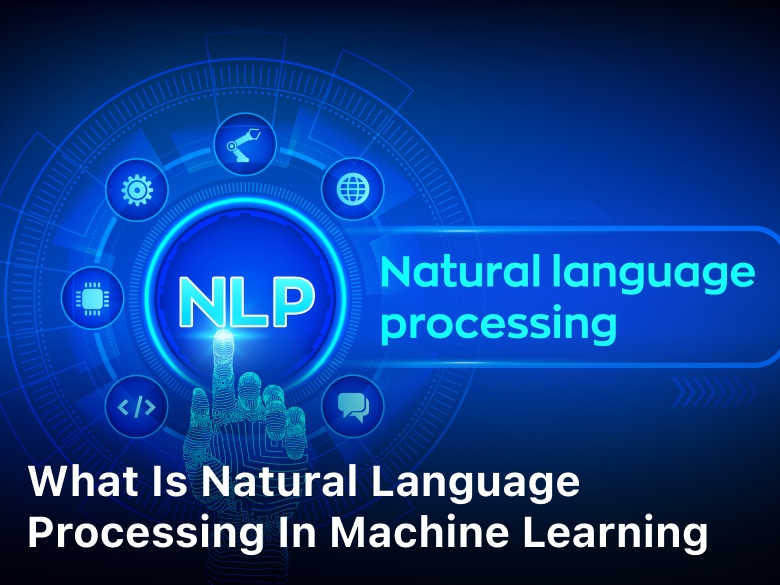What is Natural Language Processing in Machine Learning – Understand what Natural Language Processing is in Machine Learning. Uncover how AI interacts with human language to revolutionize technologic communication.
Natural Language Processing (NLP) is a branch of artificial intelligence (AI) that focuses on the interaction between computers and human language. It involves teaching machines to understand, interpret, and generate human language through various techniques such as machine learning, deep learning, and natural language understanding.
With the increasing use of chatbots, voice assistants, and other AI-powered technologies, NLP has become an essential component in the development of intelligent systems that can communicate with humans effectively.
Key Takeaways:
- Natural Language Processing (NLP) is a branch of artificial intelligence (AI) that focuses on the interaction between computers and human language.
- NLP involves teaching machines to understand, interpret, and generate human language.
- NLP enables the development of intelligent systems that can communicate with humans effectively.
What is Natural Language Processing
Natural Language Processing (NLP) is a subfield of Artificial Intelligence (AI) that focuses on enabling machines to understand, interpret, and generate human language. NLP involves the use of algorithms and statistical models to analyze and extract meaning from text and speech data. The significance of NLP lies in its ability to bridge the communication gap between humans and machines, facilitating human-like interaction with technology.
The process of NLP involves several stages, including syntactic analysis, semantic analysis, and pragmatics. Syntactic analysis involves analyzing the grammatical structure of sentences, including the identification of subjects, objects, and verbs.
Semantic analysis, on the other hand, focuses on extracting the meaning of words and phrases within a given context. Finally, pragmatics involves understanding the intended meaning of language based on the context in which it is used.
By implementing these stages of analysis, machines can comprehend the nuances of human language, providing a foundation for a variety of useful applications, such as chatbots, sentiment analysis, and machine translation.

The Fundamentals of Natural Language Processing
The core concepts of NLP can be broken down into three categories: morphology, syntax, and semantics. Morphology is the study of the structure of words and how they are formed. Syntax refers to the structure of sentences, including their grammatical components. Semantics examines meaning in language and how words and phrases relate to each other.
Other important concepts in NLP include Named Entity Recognition (NER), which involves identifying and classifying specific named entities in text, such as people, organizations, and locations. Part-of-Speech Tagging (POS) is another key concept that involves assigning grammatical tags to words based on their function in a sentence, such as nouns, verbs, and adjectives.
By understanding these fundamentals of NLP, machines can analyze and generate human language with greater precision and accuracy.
The Role of AI in Natural Language Processing
Artificial intelligence (AI) is a critical component in natural language processing (NLP). AI algorithms and models are utilized to process and interpret human language, enabling machines to perform various language-related tasks.
One of the most significant advancements in NLP has been the development of machine learning models that can process and analyze natural language data. These models use statistical algorithms to identify patterns and relationships in language data, allowing machines to detect sentiment, extract information, and understand the meaning of sentences and phrases.
AI-powered chatbots are one of the most prevalent applications of NLP. These virtual assistants are designed to converse with users in natural language, providing information, solving problems, and performing tasks. Chatbots use machine learning to understand and interpret user input, generating responses that match the user’s intent and context.
NLP is also used in voice recognition technologies, which enable machines to recognize and interpret human speech. Many modern devices, such as smartphones and virtual assistants, use NLP to process spoken commands and produce appropriate responses.
The role of AI in NLP is not limited to chatbots and voice recognition. It is also used in applications such as machine translation, sentiment analysis, and information retrieval.
The Future of AI in NLP
The role of AI in NLP is expected to become even more critical as technology advances. There is a growing demand for NLP technology in industries such as healthcare, finance, and legal services, where accurate language processing can significantly improve efficiency and accuracy.
New research in areas such as neural networks, deep learning, and natural language generation is expected to lead to significant breakthroughs in the field of NLP. These advancements could bring about new applications and capabilities that we have not yet imagined.
Overall, the role of AI in natural language processing is essential in developing machines that can interact with people more effectively. It is an exciting time for NLP as we witness the continued evolution of AI and the many ways in which it can improve our interactions with technology.
Applications of Natural Language Processing
Natural language processing (NLP) has numerous practical applications across various industries and sectors. Let’s take a closer look at how NLP is used in different contexts.
Chatbots
One of the most well-known applications of NLP is in chatbots, which are computer programs designed to simulate human conversation. Chatbots can assist with customer service, provide information, and even make reservations or purchases. NLP enables the chatbot to understand the user’s intent and respond appropriately.
Sentiment Analysis
NLP can be used to analyze large volumes of text data to determine the sentiment behind the words. This is useful for companies to gauge public opinion about their products or services, monitor brand reputation, and even predict stock prices.
Machine Translation
NLP is crucial in machine translation, which is the process of translating text from one language to another. By analyzing the grammatical structure and context of the source language, NLP algorithms can produce accurate translations in real-time.
Voice Recognition
NLP is also used in voice recognition technology, allowing devices such as smartphones and smart speakers to understand and respond to spoken commands. NLP enables the device to convert speech into text and then analyze and interpret the text to carry out the desired action.
Information Retrieval
Finally, NLP can aid in information retrieval, allowing users to search through large volumes of text data for specific information. Search engines use NLP algorithms to understand the meaning behind the words and provide relevant results to the user.
These are just a few examples of the practical applications of NLP. As the technology continues to develop and improve, we can expect to see even more innovative uses of NLP in the future.
Why is NLP important in AI?
Natural Language Processing (NLP) is critically important in the field of artificial intelligence (AI) for several reasons:
- Human-Computer Interaction: NLP enables more natural and intuitive communication between humans and computers. Instead of requiring users to learn complex programming languages or interfaces, NLP allows users to interact with AI systems using natural language, making technology more accessible to a broader range of people.
- Data Abundance: Much of the world’s data is in the form of unstructured text, such as social media posts, news articles, and documents. NLP techniques allow AI systems to extract valuable information, insights, and patterns from this textual data, facilitating data-driven decision-making and knowledge discovery.
- Automation: NLP is a key component in automating tasks that involve processing and understanding textual information. AI systems can use NLP to automatically categorize and tag documents, extract relevant information, and generate human-like text, which can significantly increase efficiency in various industries.
- Personalization: NLP helps AI systems understand user preferences and behaviors by analyzing text data, allowing for personalized recommendations in applications like e-commerce, content delivery, and marketing. This enhances user experiences and engagement.
- Language Translation: NLP plays a crucial role in language translation services, breaking down language barriers and facilitating global communication. Translation models, such as neural machine translation, have improved significantly due to advancements in NLP.
- Sentiment Analysis: NLP allows AI systems to gauge public sentiment and opinions by analyzing social media posts, customer reviews, and news articles. This is valuable for businesses and policymakers to understand public perception and make informed decisions.
- Healthcare: In healthcare, NLP helps analyze electronic health records, medical literature, and patient data to improve diagnosis, treatment recommendations, and drug discovery.
- Virtual Assistants: Virtual assistants like Siri, Alexa, and Google Assistant rely heavily on NLP to understand and respond to user queries in a conversational manner.
- Content Generation: NLP models can generate human-like text, which is useful for content creation, chatbots, and virtual storytelling.
- Knowledge Extraction: NLP can be used to extract structured information from unstructured text, aiding in the creation of knowledge bases and databases.
- Language Understanding: NLP models have made significant advancements in understanding context and context-aware responses, making AI systems more intelligent in understanding the nuances of language.
- Ethical and Bias Considerations: NLP also brings challenges related to bias in data and language models. Understanding and addressing bias in NLP is essential to ensure fairness and equity in AI applications.
In summary, NLP is important in AI because it enables machines to understand, interpret, and generate human language, opening up a wide range of applications across industries and improving human-computer interaction in meaningful ways.
Challenges in Natural Language Processing
Despite its vast potential, natural language processing (NLP) poses significant challenges in its development and implementation. Below are some of the key challenges currently faced in the field:
- Ambiguity: Human language is inherently ambiguous, and NLP systems must cope with multiple possible interpretations of a single phrase or sentence. For instance, the word “bank” can refer to a financial institution or the side of a river. This presents challenges in accurately interpreting and generating text.
- Context: Human language relies heavily on context to convey meaning. NLP systems must be able to accurately discern the context of a word or phrase in order to correctly interpret its meaning. For example, the word “run” can refer to a physical activity or operating a machine, and the context in which it is used determines its meaning.
- Language diversity: There are thousands of languages spoken around the world, each with unique structures, grammar, and syntax. Developing NLP systems that can accurately process and understand multiple languages poses a significant challenge.
- Large-scale annotated datasets: NLP algorithms require large amounts of annotated data to train and improve. However, annotating data is a time-consuming and expensive process, and availability of high-quality annotated datasets is often limited.
Addressing these challenges is critical in developing robust NLP systems and realizing the full potential of natural language processing in machine learning.
Future Trends in Natural Language Processing
The field of natural language processing is rapidly evolving, and there are several future trends and advancements expected in the coming years. Some of the notable trends and potential breakthroughs in the NLP field that could significantly impact the industry are:
- Conversational AI: One of the most significant advancements in NLP is the development of conversational AI. Conversational AI refers to machines’ ability to understand and respond to human language accurately. With the rise of chatbots and virtual assistants, conversational AI has become increasingly popular and is expected to continue growing in the future.
- Multi-lingual NLP: As globalization continues to gather momentum, the demand for multi-lingual NLP is rapidly increasing. There is a pressing need for machines to comprehend and process various languages. Therefore, multi-lingual NLP technology is gaining significant attention, and researchers are continuously working to enhance machine translation and language models.
- Contextual Understanding: Contextual understanding refers to machines’ ability to comprehend and interpret text in context. With the rise of social media and user-generated content, context is becoming more critical in NLP. Therefore, NLP researchers are working towards developing machine learning models that can understand context and sentiment accurately.
- Visualizing Language: Another significant advancement in NLP is the ability to visualize language. Researchers are working on developing machine learning models that can visualize language to provide insights into the structure, meaning, and context of text. This technology has various applications, such as in content analytics and social media monitoring.
- Big Data: The availability of large-scale annotated datasets holds the key to developing more accurate and robust NLP models. Therefore, researchers are working on developing machine learning models that can process and analyze vast amounts of data, providing better insights and improving the accuracy of NLP models.
Undoubtedly, there are many other exciting breakthroughs and advancements expected in the field of natural language processing. With continued research and development, it is expected that NLP will continue to revolutionize how we interact with machines and how they interact with us.
Conclusion
Natural language processing (NLP) is a critical component of machine learning, allowing machines to comprehend, analyze and generate human language. Through its ability to interpret human language, NLP has revolutionized how machines interact with humans, enabling various language-related tasks such as chatbots, sentiment analysis, machine translation, and voice recognition.
However, the development of robust NLP systems comes with its challenges, including ambiguity, context, language diversity, and the need for large annotated datasets. Despite these challenges, NLP continues to progress, with emerging technologies and research areas expected to shape the future of NLP.
The significance of NLP in machine learning
In conclusion, NLP is a critical aspect of machine learning, facilitating machine-human interaction, and communication. NLP’s significance in machine learning is evident in its practical applications across various industries and its potential to continue reshaping how machines understand and interact with human language.
FAQs
Q: What is Natural Language Processing in Machine Learning?
A: Natural Language Processing (NLP) in machine learning refers to the ability of machines to comprehend, analyze, and generate human language. It involves the use of artificial intelligence algorithms and models to process and interpret natural language, enabling machines to perform language-related tasks.
Q: How does Natural Language Processing work?
A: Natural Language Processing works by utilizing AI techniques to understand and manipulate human language. It involves tasks such as tokenization, part-of-speech tagging, syntactic parsing, semantic analysis, and machine translation. NLP algorithms learn from large datasets to extract meaning and context from text and speech.
Q: What are the applications of Natural Language Processing?
A: Natural Language Processing has various applications across industries. It is used in chatbots for customer service, sentiment analysis to analyze opinions, machine translation for language conversion, voice recognition for virtual assistants, and information retrieval in search engines, among many others.
Q: What are the challenges in Natural Language Processing?
A: Natural Language Processing faces challenges such as dealing with ambiguity in language, understanding context and sarcasm, handling diverse languages and dialects, and the need for large annotated datasets for training models. Developing robust NLP systems requires addressing these challenges.
Q: What future trends can we expect in Natural Language Processing?
A: The future of Natural Language Processing holds advancements in areas such as deep learning, neural networks, and language models. There is ongoing research on improving machine comprehension and generation, as well as exploring new applications, such as emotion analysis and natural language understanding.






